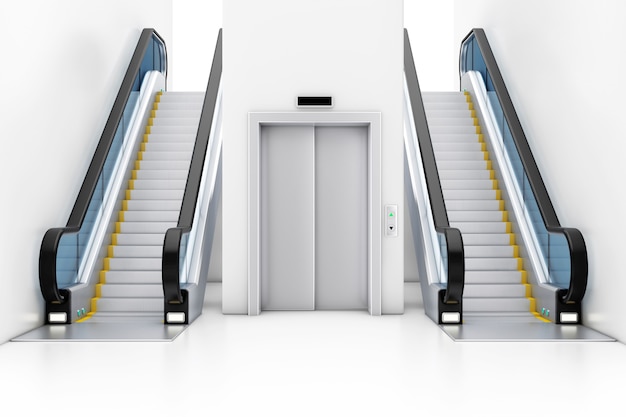Leading Lift Companies in London: Offering Quality Installations and Maintenance
Wiki Article
Delving Into the Globe of Lifts: Common Concerns Dealt With by Numerous Lift Systems
As we navigate via the upright transport systems of contemporary structures, lifts stand out as an important part of our daily lives. From hydraulic elevators to grip systems and machine-room-less designs, each lift type comes with its set of common problems.Hydraulic Lifts
Hydraulic lifts, frequently liked for low-rise structures, utilize fluid stress to control the motion of the lift car (lift repair companies). This device involves a hydraulic pump pushing oil into a cylinder, triggering the lift to relocate the wanted instructions. While hydraulic lifts are recognized for their smooth and quiet operation, they do come with their own set of common issuesOne prevalent trouble with hydraulic lifts is oil leak. In addition, concerns with the control system, such as defective valves or a malfunctioning pump, can cause disturbances in the lift's motion.
Routine maintenance and prompt repair work are vital to ensure the smooth performance of hydraulic elevators. By dealing with these common issues proactively, structure proprietors can lessen downtime and make certain the safety and security and efficiency of their vertical transport system.
Traction Lifts
When considering upright transportation systems in structures, one more common kind in addition to hydraulic lifts is the traction lift. Traction elevators operate using a system of ropes and weights that move the lift cars and truck by gripping onto the hoist ropes. This device permits smoother and faster vertical transportation contrasted to hydraulic systems.One of the typical issues dealt with by traction lifts is rope wear. The constant motion of the ropes within the grip system can bring about deterioration gradually, potentially creating the elevator to breakdown or become hazardous for usage. Routine inspections and upkeep of the ropes are necessary to ensure the elevator's correct performance and safety.
One more issue that traction lifts might experience is connected to the control system. Problems with the control system can cause concerns such as erratic motion, hold-ups in feedback times, and even total closures. Regular screening and upkeep of the control system are crucial to stop such concerns and ensure the elevator's dependability.
Machine-Room-Less (MRL) Lifts

One of the key components of MRL elevators is the compact gearless grip maker that is installed within the hoistway. This equipment effectively drives the lift auto without the requirement for bulky devices found in standard traction lifts. Additionally, MRL lifts generally make use of a counterweight system to stabilize the automobile, more improving their power efficiency.
In spite of their benefits, MRL lifts may deal with obstacles connected to upkeep and repair because of the constrained space for devices installment. Ease of access for servicing parts within the shaft can be limited, needing specialized training for technicians. Proper upkeep schedules and normal evaluations are vital to ensure the ongoing smooth operation of MRL elevators.
Overloading and Weight Restriction Issues
Are elevators furnished to manage excess weight loads efficiently and securely? Overwhelming and weight limitation issues are vital worries in lift operations. Elevator producers style lifts with particular weight capacities to guarantee traveler security and devices durability. Exceeding these weight limits can lead to various troubles, consisting of mechanical failings, delays, and safety hazards.When lifts are overwhelmed, it puts excessive pressure on the motor, cables, and various other elements, potentially triggering breakdowns or breakdowns. If they detect excess weight, safety and security systems such as sensors and overload sensors are in place to stop elevators from relocating. Additionally, surpassing weight limitations can result in raised energy intake and deterioration on the lift system.
To mitigate overloading problems, constructing managers must prominently show weight limits in elevators and enlighten residents on the relevance of adhering see this site to these limitations - lift repair companies. Normal maintenance checks by certified specialists can additionally help make sure that lifts are operating within risk-free weight criteria. By dealing with overloading and weight limitation concerns proactively, building owners can improve lift safety and effectiveness
Electric System Failings
Going beyond weight limitations in lifts can not only lead to mechanical issues but also potentially add to electric system failings within the lift facilities. Electrical system failures are a vital issue in elevator operation, as they can trigger unanticipated shutdowns, malfunctions, or even security threats.Regular upkeep and evaluations are essential to identify Visit Your URL and address potential electric issues immediately, making sure the reliable and risk-free operation of lift systems. By adhering to weight restrictions and carrying out regular electrical system checks, building proprietors can alleviate the risk of electric failures in lifts.
Conclusion

Hydraulic lifts, usually chosen for low-rise buildings, use fluid stress to regulate the activity of the elevator car.When thinking about vertical transportation systems in structures, an additional common type aside from hydraulic lifts is the grip lift. Traction lifts run using a system of ropes and counterweights that relocate the lift vehicle by gripping onto the hoist ropes. Unlike conventional elevators that call for a separate maker area to house the equipment, MRL lifts incorporate many of the components within the shaft, getting rid of the demand for a specialized equipment room.In final thought, lifts encounter common issues such as hydraulic malfunctions, grip system failings, and i thought about this electric system problems.
Report this wiki page